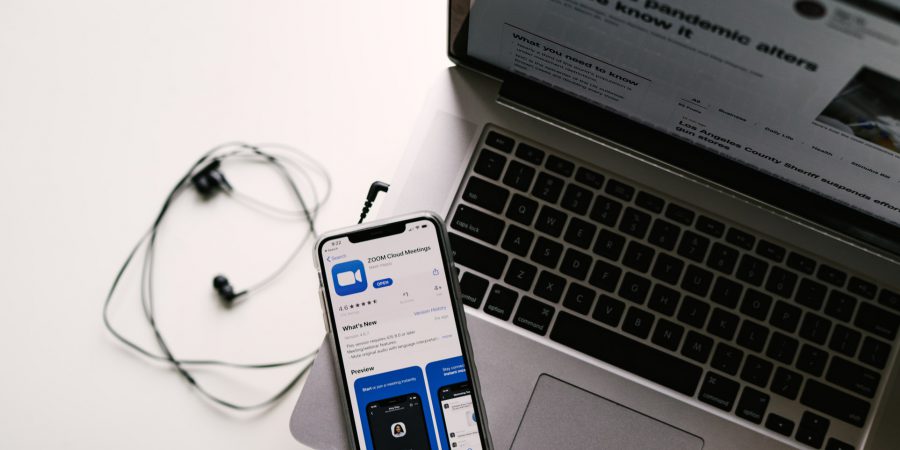Let’s talk about something you may have been hearing about – video conferencing platforms and privacy. As video conferencing platforms are used more and more, we are all making individual choices about what seems best for us. Zoom is one of the more common video call platforms that people seem to be using to keep in touch with friends and family. Lately, there have been many stories of people intruding on your video chat which has raised privacy concerns about the platform.
If it’s your video chat platform of choice, there are some measures you can take to protect yourself online. In today’s post, we’re sharing some information from the Zoom security page alongside our own suggestions, to help you maintain your online privacy.
What’s Zoom? And what’s “Zoombombing?”
Zoom is a video conferencing platform that allows users to connect through meetings with unique IDs. These meetings can be one-on-one or grow all the way to large group calls.
Each Zoom meeting is created around a 9-digit ID which, ideally, only your family and friends have. This ID is created by the host (the person setting up and controlling the meeting). However, when an outsider catches wind of that ID, enters your meeting and disrupts it, that’s known as “Zoombombing.”
When you’re being “Zoombombed,” an unwelcome visitor could project offensive information onto your screen, spam the associated chat thread or generally behave inappropriately in a disruptive way. Sometimes, they may even record parts of the meeting and repost the videos on other online forums. On top of being annoying, these intrusions can also be a privacy concern. In the next section, we suggest some simple ways to minimize privacy risks, including “Zoombombing.”
Privacy tips if you are setting up the meeting (the host):
Before the meeting:
- Use a password: when setting up a meeting, you can require a meeting password. Only participants who have the password can access the meeting.
- Disable join before host: this prevents people from entering the meeting before you and gives you more ability to control who is in the meeting from the beginning.
- Go to “Account Management,” then “Account Settings,” navigate to the “Meeting” tab, and confirm the “Join before host” setting is disabled.
- Use the “Waiting Room:” Zoom allows you to see who is trying to access the meeting, and you decide whether to allow them admittance.
- This setting must be turned on before you meet. Go to “Account Management,” then “Account Settings,” navigate to the “Meeting” tab, and confirm the “Waiting Room” setting is enabled.
During the meeting:
- Lock a meeting: this allows you to prevent new participants from joining, even if they have the meeting ID and password (which means you have to wait for everyone to arrive before enabling this feature).
- Click on “Participants” and select “Lock Meeting.”
- Expel participants: remove any participants that shouldn’t be in attendance.
- Click “Participants,” hover over the intruder’s name and select “Remove.” If you then lock the meeting, you can be doubly sure they won’t be able to re-enter now that they have the meeting ID (under another account, for example).
- End a meeting: If all else fails, and you’re having trouble keeping someone out of your meeting, you can always end the meeting and start another (ideally with all of these security suggestions incorporated).
- Make sure the new meeting doesn’t use the same ID or the intruder will be able to jump back in.
Privacy tips for all participants:
- Don’t share meeting IDs or links in public forums (Twitter, Facebook, etc.—any timeline is probably a bad idea).
- If you notice an unfamiliar participant in the meeting, bring it to the attention of the group so you can determine if there’s been a security breach, and so the host can act quickly to correct it. This is easy between a small group of friends but may not be as evident with a really large group.
There are a number of video conferencing platforms to choose from. To make the right decision for yourself, think about which elements are the most important to you and then do your research and ask friends.
About Consumer Protection BC
We are responsible for regulating specific industries and certain consumer transactions in British Columbia. If your concern is captured under the laws we enforce, we will use the tools at our disposal to assist you. If we can’t help you directly, we will be happy to provide you with as much information as possible. Depending on your concern, another organization may be the ones to speak to; other times, court or legal assistance may be the best option. Explore our website at www.consumerprotectionbc.ca.



Great article. Several typos though .
Hi Jim, thank you for letting us know!